The Intel Xeon Bronze 3106 is not the Xeon Scalable family’s most glorified member. At the same time, it fills an important niche: lighting a platform inexpensively. Benchmarking the Intel Xeon Bronze 3106 is a somewhat strange endeavor. If you want maximum performance, the Xeon Bronze series is not where you should be looking. Instead, we are going to approach this exercise to answer whether it is worth spending $100 more or $100 less on moving up or down one SKU in the stack. We are also going to pull in figures from older generations and products like the Xeon D and Atom series. If you are looking for a machine to connect four hard drives and have 10GbE, Intel Xeon Scalable will use more power but have more expansion options.
Key stats for the Intel Xeon Bronze 3106: 8 cores / 8 threads, 1.7GHz and 11MB L3 cache. The CPU features 85W TDP. That means that the Bronze 3106 is not built for the 2017 single socket performance crown at just over $300 per CPU.
Test Configuration
Here is our basic test configuration for this motherboard:
- Motherboard: Supermicro X11SPH-nCTF
- CPU: Intel Xeon Bronze 3106
- RAM: 6x 16GB DDR4-2133 RDIMMs (Samsung)
- SSD: Intel DC S3710 400GB
- SATADOM: Supermicro 32GB SATADOM
One of the key advantages the Intel Xeon Bronze series has is the ability to use up to 12 DIMMs per socket. Intel’s embedded platforms cannot do this in 2017. DDR4-2133 is the fastest memory supported on the Xeon Bronze platform which is why we are not using faster speeds.
Again, in terms of market segmentation, the Intel Xeon Bronze 3106 is a successor to the Intel Xeon E5-2609 V4. These are chips designed for applications where you need minimal compute power and and where you are looking to spend as little as possible to boot your Xeon Scalable based server.
Single Intel Xeon Bronze 3106 Benchmarks
For this exercise, we are using our legacy Linux-Bench scripts which help us see cross platform “least common denominator” results. We do have a full set of expanded benchmarks from our next-gen test suite (Linux-Bench2) so expect to see those results sprinkled in as we get a larger comparison data set built.
Python Linux 4.4.2 Kernel Compile Benchmark
This is one of the most requested benchmarks for STH over the past few years. The task was simple, we have a standard configuration file, the Linux 4.4.2 kernel from kernel.org, and make the standard auto-generated configuration utilizing every thread in the system. We are expressing results in terms of compiles per hour to make the results easier to read.
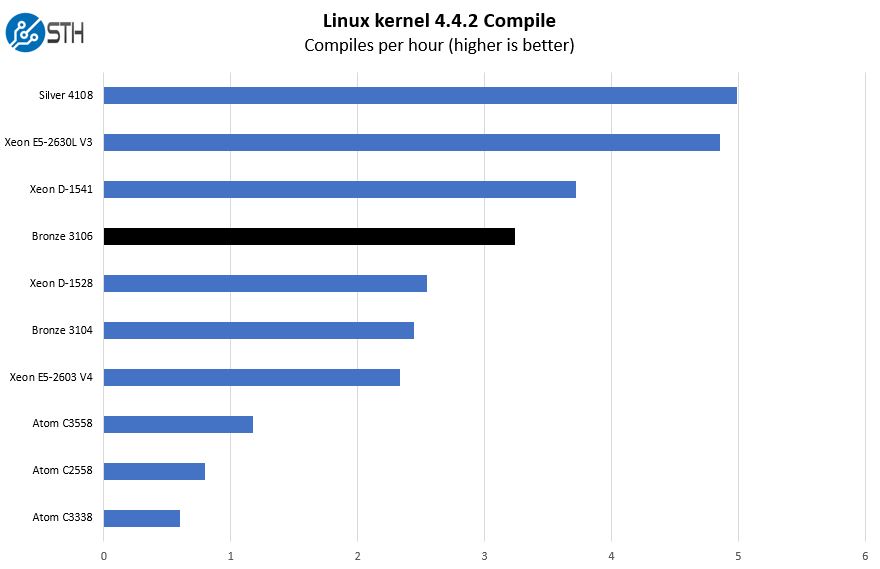
The eight core, eight thread 1.7GHz Intel Xeon Bronze 3106 performs in the ballpark of the Xeon D series. Although it lacks hyperthreading, larger caches, updated micro architecture and significantly more memory bandwidth help it perform well. For about $100 more than the Intel Xeon Bronze 3104, you get two additional cores and you can see that the additional compute resources directly equate to better performance.
c-ray 1.1 Performance
We have been using c-ray for our performance testing for years now. It is a ray tracing benchmark that is extremely popular to show differences in processors under multi-threaded workloads.
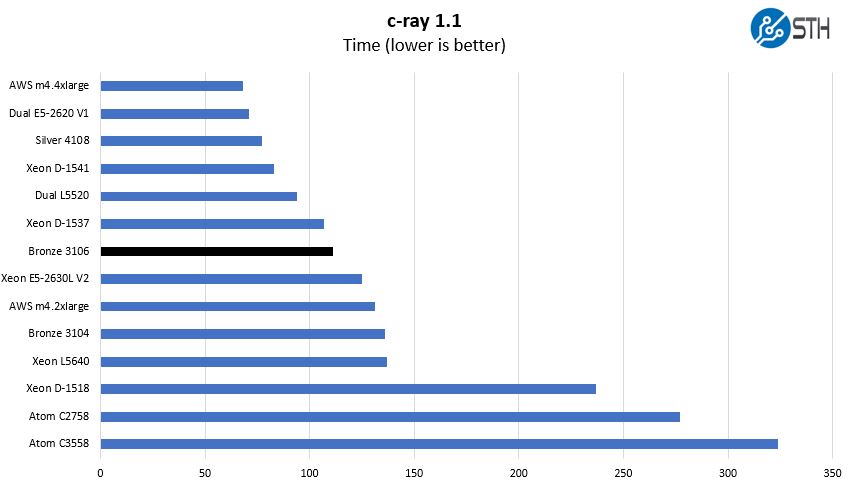
In this chart, one can see that the Bronze 3106 sits between the AWS m4.2xlarge and m4.4xlarge. Likewise, we can see that there is an enormous step up in terms of performance moving from the low-mid end of the Atom lines to the bottom tier Intel Xeon Bronze CPUs.
7-zip Compression Performance
7-zip is a widely used compression/ decompression program that works cross platform. We started using the program during our early days with Windows testing. It is now part of Linux-Bench.
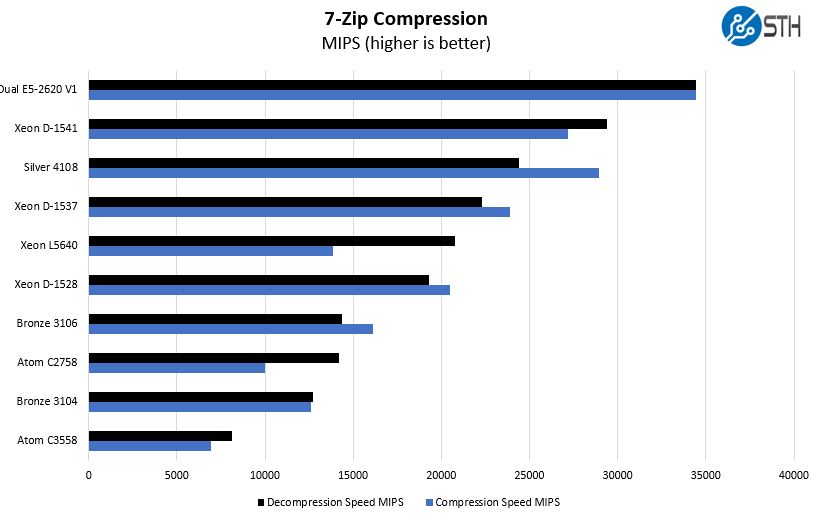
Flipping around the discussion, we paid only around $100 more for each of our Xeon Silver 4108’s versus the Intel Xeon Bronze 3106. If you are building a low-end platform on Intel Xeon Scalable, it may be worth considering how much performance jump one gets for adding about $100 to a server’s purchase price.
NAMD Performance
NAMD is a molecular modeling benchmark developed by the Theoretical and Computational Biophysics Group in the Beckman Institute for Advanced Science and Technology at the University of Illinois at Urbana-Champaign. More information on the benchmark can be found here. We are going to augment this with GROMACS in the next-generation Linux-Bench in the near future. With GROMACS we have been working hard to support Intel’s Skylake AVX-512 and AVX2 supporting AMD Zen architecture. Here are the comparison results for the legacy data set:
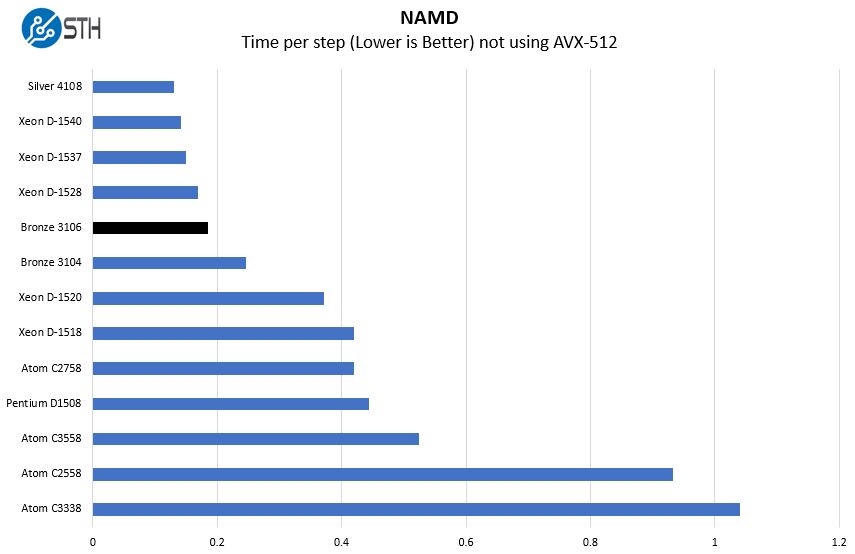
This chart should probably be labeled “NAMD on CPUs you would not want to run NAMD on” but as part of our legacy test suite we wanted to include it. Of course, numbers will shift if you use AVX-512. The Intel Xeon D-1528 on a motherboard that includes 10GbE will likely be a similar price or perhaps slightly less expensive than a similar Xeon Bronze 3106 motherboard and CPU.
Sysbench CPU test
Sysbench is another one of those widely used Linux benchmarks. We specifically are using the CPU test, not the OLTP test that we use for some storage testing.
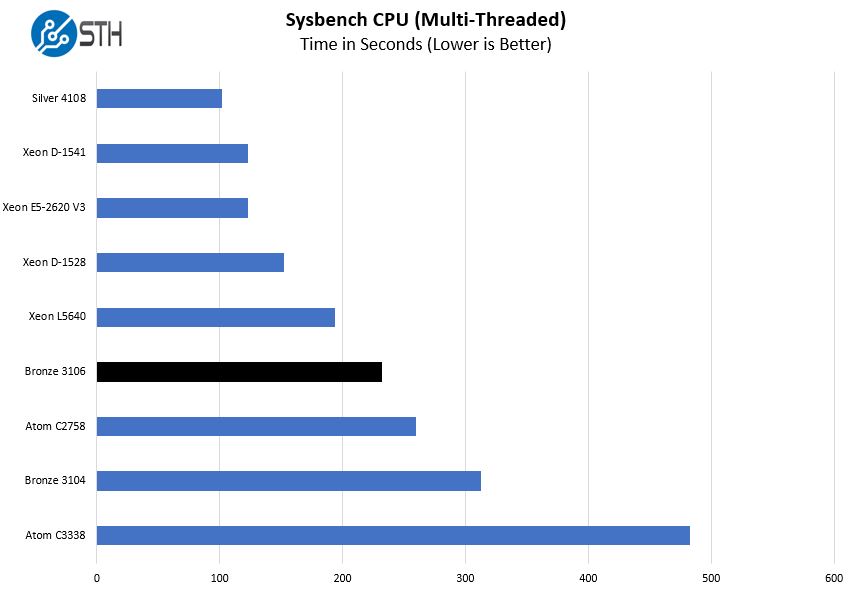
The lack of Hyper-Threading and low clock speeds hurt the Bronze 3106. At the same time, it does show the value of upgrading over the Bronze 3104.
OpenSSL Performance
OpenSSL is widely used to secure communications between servers. This is an important protocol in many server stacks. We first look at our sign tests:
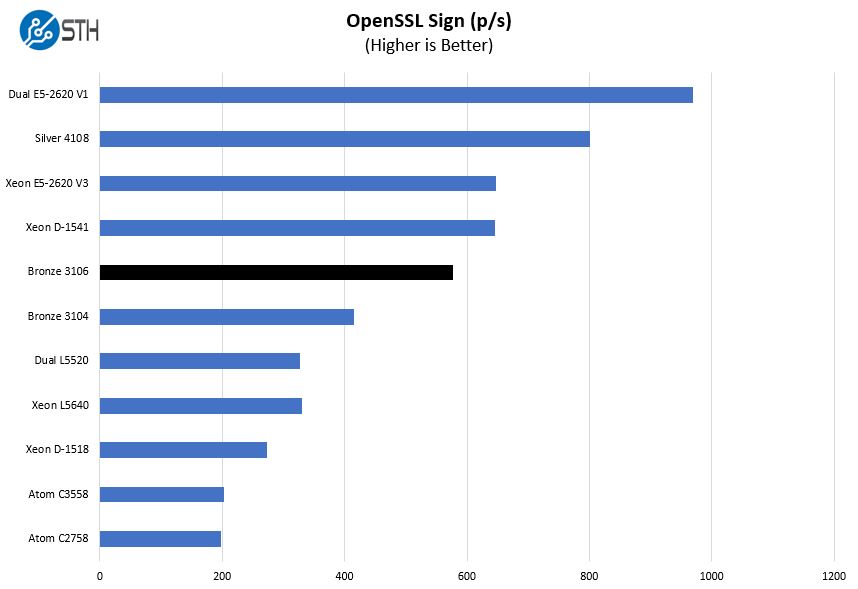
And the verify results:
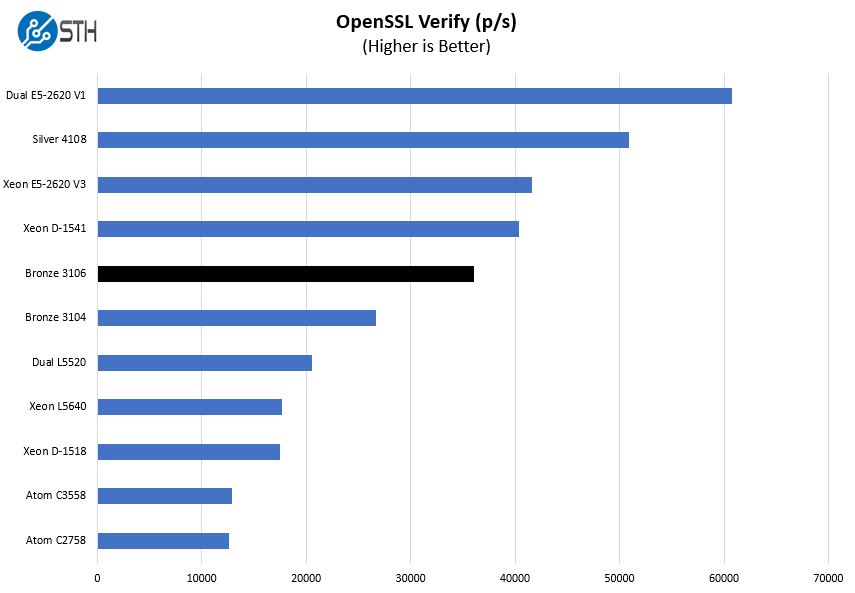
If you are running older servers, the lowest-end Intel Xeon Bronze CPUs are quite interesting.
UnixBench Dhrystone 2 and Whetstone Benchmarks
One of our longest running tests is the venerable UnixBench 5.1.3 Dhrystone 2 and Whetstone results. They are certainly aging, however, we constantly get requests for them, and many angry notes when we leave them out. UnixBench is widely used so we are including it in this data set. Here are the Dhrystone 2 results:
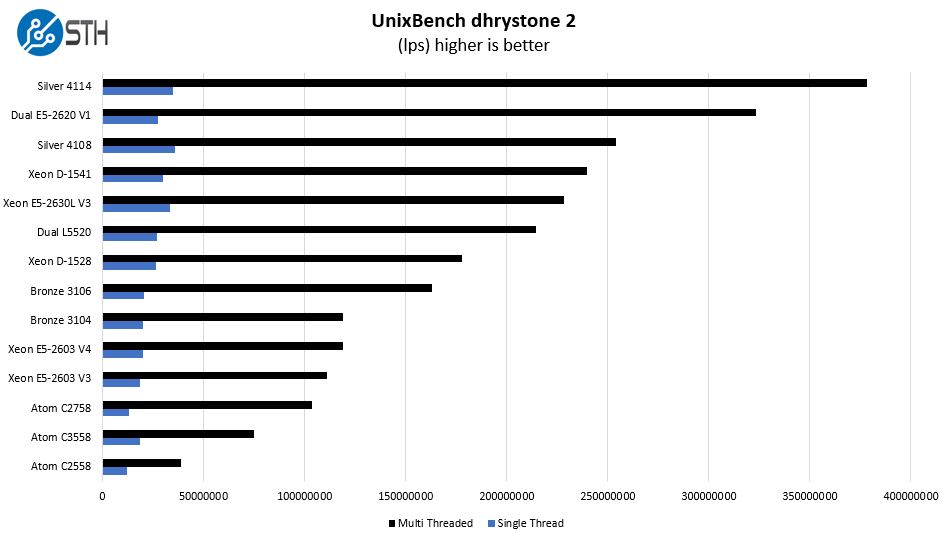
And the Whetstone numbers:
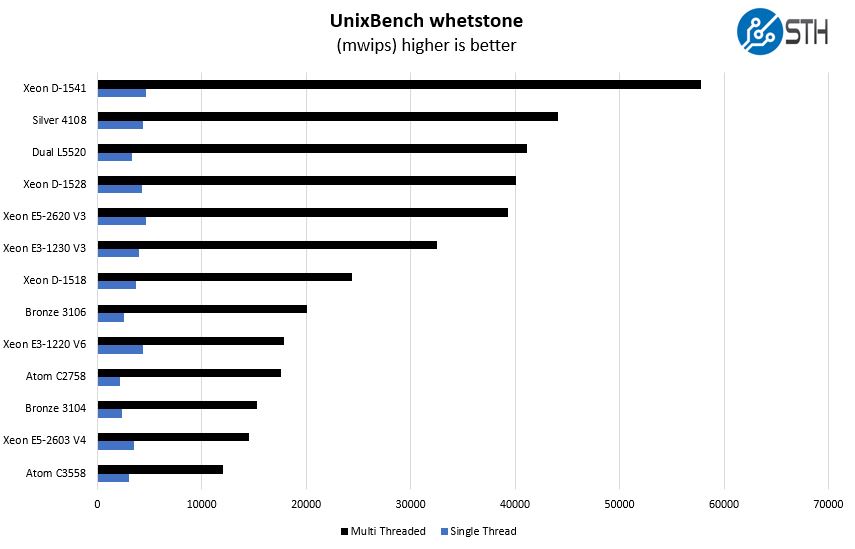
Overall, these results are perfectly acceptable for applications such as running a basic DNS server, a key use case for the Bronze series.
Final Words
When we first came out with Intel Xeon Platinum 8180 benchmarks, we were immediately asked about the other end of the spectrum. The Intel Xeon Bronze 3106 is a very interesting processor. Anyone buying the Bronze 3106 is essentially saying they are not looking for the lowest cost processor (Bronze 3104), but they are not concerned with getting the significant performance boost from the Intel Xeon Silver 4108.
Although we published the AMD EPYC 7601 Benchmarks Part 1, AMD does not have a direct competitor for the single socket Intel Xeon Bronze (as of 2017-08-11) in the price bracket as the least expensive AMD EPYC is about 50% more than the Intel Xeon Bronze 3106 (just over $300 v. over $450) and has a higher TDP. Systems that use Intel Xeon Bronze CPUs often have 1-12 hard drives and are where getting the lowest cost CPU is available. If you want to see an example of the configuration these chips target, check out our HPE ProLiant DL60 Gen9 review.
Overall, the Intel Xeon Bronze 3106 is the option if you want something faster than the Intel Xeon Bronze 3104 but do not want to spend a few dollars more for the Intel Xeon Silver 4108.

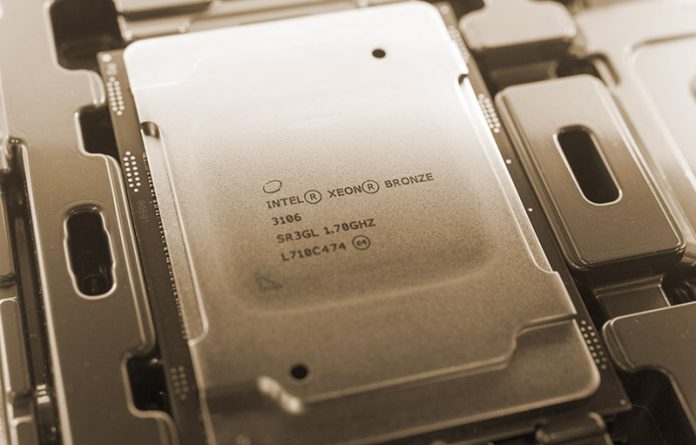



Great, this was just the test i needed after the previous motherboard article, thanks
The 7-zip benchmark is a little surprising to me, the D-1541 is almost twice as fast as the 3106, the difference is not that big in most of the other tests. Curious as to why it performs so well in that test? Does it have any acceleration or architectural advantage in that particular test? Sure, the 1541 has HT, slightly higher frequency (don’t know the IPC difference between Broadwell and Skylake though), or is it just as simple as 7-zip is one of the few with almost perfect HT scaling?
Jesper I’d say HT clocks and some apps Broadwell cache better. D-1537 is higher too with HT and higher clocks. D-1541 is just higher clocked D-1537.
Thanks for putting them both in.
Some power consumption metrics would be great too.
I’m curious as to how the Bronze & Silver lines do on power vs. the Xeon-D parts.
Don – published lower-end Silver numbers in the motherboard review.
“Although we published the AMD EPYC 7601 Benchmarks Part 1, AMD does not have a direct competitor for the single socket Intel Xeon Bronze (as of 2017-08-11) in the price bracket as the least expensive AMD EPYC is about 50% more than the Intel Xeon Bronze 3106 (just over $300 v. over $450) and has a higher TDP”
AMD has officially stated that the Threadripper CPUs can support up to 1 TB of DRAM.
The problem for AMD to compete at the moment with low end Xeon Scalable family’s are motherboards for threadripper that support buffered ECC-RAM.
Skylake Xeon is LCC 4..10 core, HCC 12..18 core, XCC 20..28. The good ones are used for high clocks and/or cores(threads) XEON’s, the crappy ones are used for low clocks and/or cores(threads)XEON’s (and skylake x consumer models). AMD does the same with the ZEN cores.
When AMD would put 2 ryzen 3 1300x(TDP 65W) cpu’s in a threadripper socket and down clock it from 3.4 to 1.9 GHz they should get close to or below the TDP of 85 Watt and would have 60+4 PCIe lanes
(half an EPYC 7281 16/32 2.1GHz 32 MB 155W).
For me it looks like a lack of resources on the AMD side or the yields are way to high and they can earn more money with other platforms.
For now when you need upto 768 GB of ram and/or 48 PCIe-lanes with a slow processor with a low clock count and a cpu price upto $ 300 dollar (and you want to be able to upgrade your cpu upto super speed with a $ 10.000 8180 cpu), XEON Bronze is the way to go.
For all other low-end server tasks with buffered ECC Xeon-D and maybe Xeon E3.
I also miss the power consumptions in these reviews. It was one of the main reason I kept coming here for the reviews. I am not talking about the delta differences either. I would love to see idle and the 100% load power consumption. These numbers are also good to know when planning future builds, being it a single home power user to a DC.
Spoke too soon. I see in the MB review you had done a power consumption section. Many thanks.
Patrick, thank you for your reviews, very interesting to read. What you think about comparison Bronze 3106 vs 2609v4?
Very similar. In the Bronze 3104 piece, we did V4 to Bronze direct comparison.